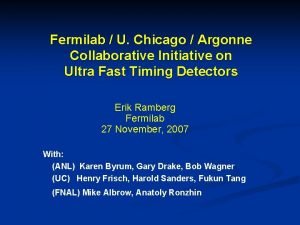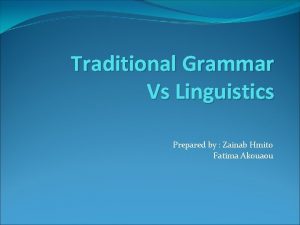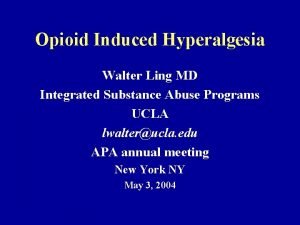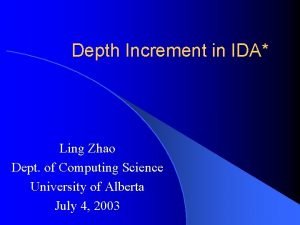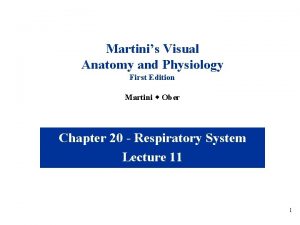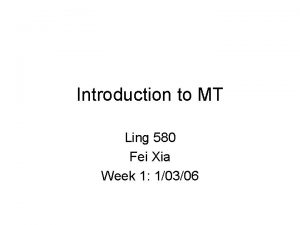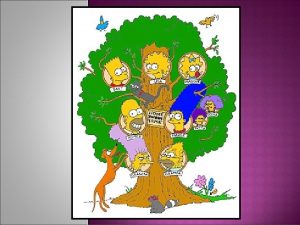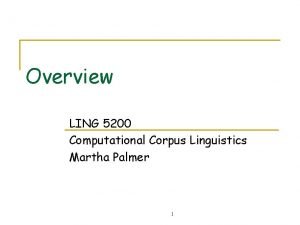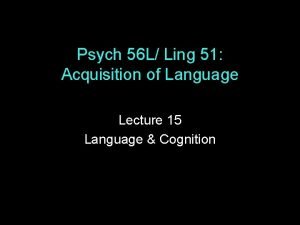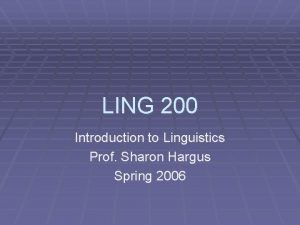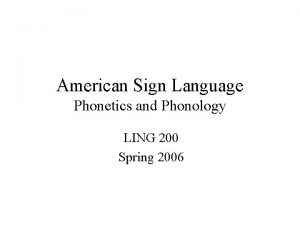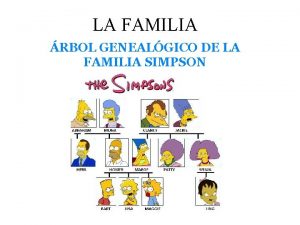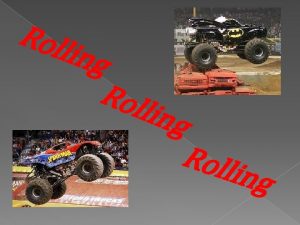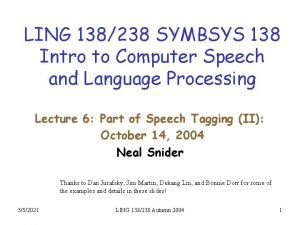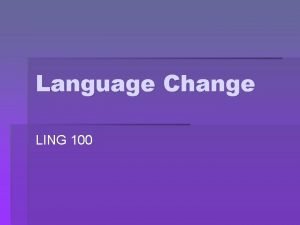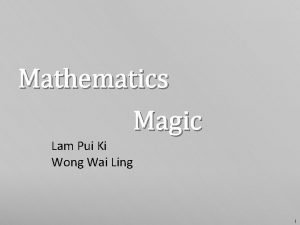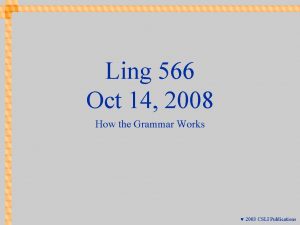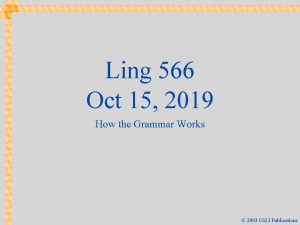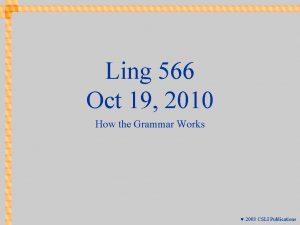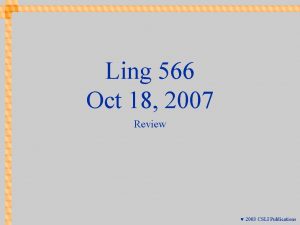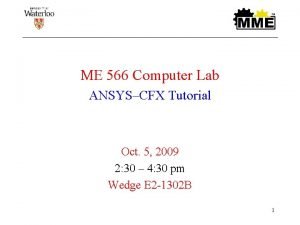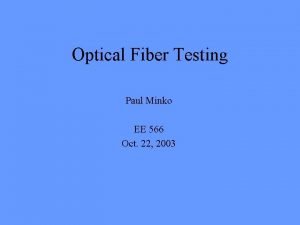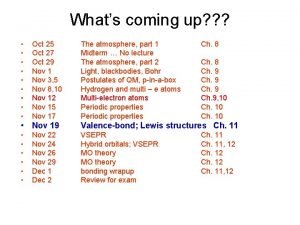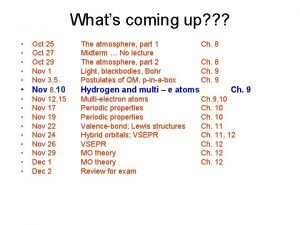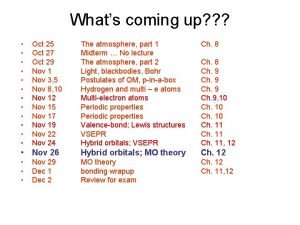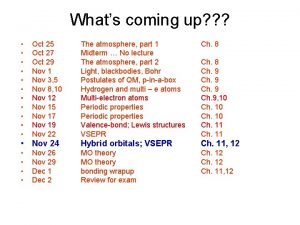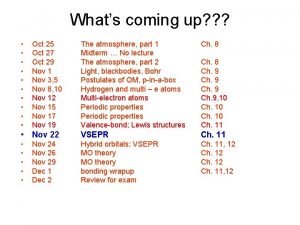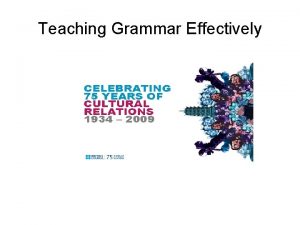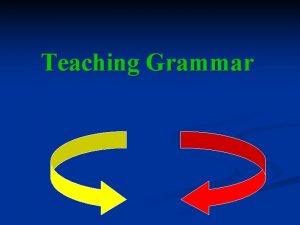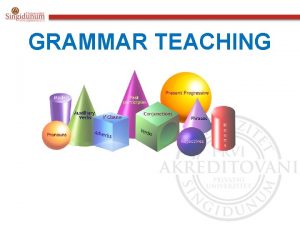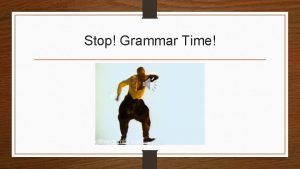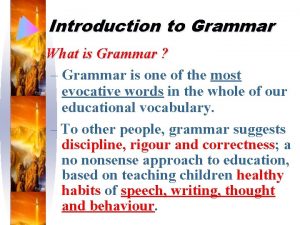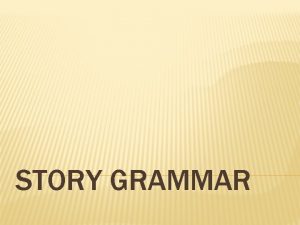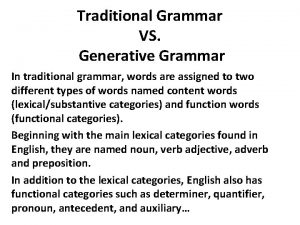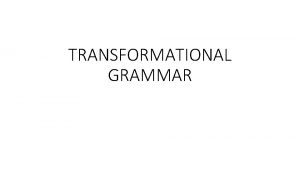Ling 566 Oct 19 2009 How the Grammar





































- Slides: 37

Ling 566 Oct 19, 2009 How the Grammar Works © 2003 CSLI Publications

Overview • What we’re trying to do • The pieces of our grammar • Two extended examples • Reflection on what we’ve done, what we still have to do 2 © 2003 CSLI Publications

What We’re Trying To Do • Objectives • • • Develop a theory of knowledge of language Represent linguistic information explicitly enough to distinguish well-formed from ill-formed expressions Be parsimonious, capturing linguistically significant generalizations. • Why Formalize? • • • To formulate testable predictions To check for consistency To make it possible to get a computer to do it for us 3 © 2003 CSLI Publications

How We Construct Sentences • The Components of Our Grammar • • • Grammar rules Lexical entries Principles Type hierarchy (very preliminary, so far) Initial symbol (S, for now) • We combine constraints from these components. • Q: What says we have to combine them? 4 © 2003 CSLI Publications

An Example A cat slept. • Can we build this with our tools? • Given the constraints our grammar puts on well-formed sentences, is this one? 5 © 2003 CSLI Publications

Lexical Entry for a • • • 6 Is this a fully specified description? What features are unspecified? How many word structures can this entry license? © 2003 CSLI Publications

Lexical Entry for cat • • 7 Which feature paths are abbreviated? Is this a fully specified description? What features are unspecified? How many word structures can this entry license? © 2003 CSLI Publications

Effect of Principles: the SHAC 8 © 2003 CSLI Publications

Description of Word Structures for cat © 2003 CSLI Publications

Description of Word Structures for a 10 © 2003 CSLI Publications

Building a Phrase 11 © 2003 CSLI Publications

Constraints Contributed by Daughter Subtrees 12 © 2003 CSLI Publications

Constraints Contributed by the Grammar Rule 13 © 2003 CSLI Publications

A Constraint Involving the SHAC 14 © 2003 CSLI Publications

Effects of the Valence Principle 15 © 2003 CSLI Publications

Effects of the Head Feature Principle 16 © 2003 CSLI Publications

Effects of the Semantic Inheritance Principle 17 © 2003 CSLI Publications

Effects of the Semantic Compositionality Principle 18 © 2003 CSLI Publications

Is the Mother Node Now Completely Specified? 19 © 2003 CSLI Publications

Lexical Entry for slept 20 © 2003 CSLI Publications

Another Head-Specifier Phrase Key HSR SHAC Val Prin HFP SIP SCP 21 © 2003 CSLI Publications

Is this description fully specified? © 2003 CSLI Publications

Does the top node satisfy the initial symbol? © 2003 CSLI Publications

RESTR of the S node 24 © 2003 CSLI Publications

Another Example 25 © 2003 CSLI Publications

Head Features from Lexical Entries 26 © 2003 CSLI Publications

Head Features from Lexical Entries, plus HFP 27 © 2003 CSLI Publications

Valence Features: Lexicon, Rules, and the Valence Principle Key Lexicon Val. Prin. © 2003 CSLI Publications

Required Identities: Grammar Rules © 2003 CSLI Publications

Two Semantic Features: the Lexicon & SIP © 2003 CSLI Publications

RESTR Values and the SCP 31 © 2003 CSLI Publications

An Ungrammatical Example What’s wrong with this sentence? 32 © 2003 CSLI Publications

An Ungrammatical Example What’s wrong with this sentence? So what? 33 © 2003 CSLI Publications

An Ungrammatical Example The Valence Principle 34 © 2003 CSLI Publications

An Ungrammatical Example Head Specifier Rule ←co n trad icti on→ 35 © 2003 CSLI Publications

Exercise in Critical Thinking • Our grammar has come a long way since Ch 2, as we've added ways of representing different kinds of information: • generalizations across categories • semantics • particular linguistic phenomena: valence, agreement, modification • What else might we add? What facts about language are as yet unrepresented in our model? 36 © 2003 CSLI Publications

Overview • What we’re trying to do • The pieces of our grammar • Two extended examples • Reflection on what we’ve done, what we still have to do • Next time: Review 37 © 2003 CSLI Publications
 Ortec tac 566
Ortec tac 566 Decreto legislativo 566/20
Decreto legislativo 566/20 Unrestricted grammar example
Unrestricted grammar example Right linear grammar
Right linear grammar Right linear grammar
Right linear grammar Traditional grammar vs modern grammar
Traditional grammar vs modern grammar Walter ling
Walter ling Ida ling
Ida ling Mei-ling from singapore was preparing
Mei-ling from singapore was preparing Tree in lung picture
Tree in lung picture Mt ling
Mt ling Ling simpson
Ling simpson Ling internet
Ling internet Ling
Ling Negen ling
Negen ling Huo lingyu
Huo lingyu Ling
Ling Minimal pair asl
Minimal pair asl Como se llaman las hermanas de marge simpson
Como se llaman las hermanas de marge simpson Short, medium and long-term goals examples
Short, medium and long-term goals examples Lam wai ling
Lam wai ling Graph4ai
Graph4ai Agnes ling
Agnes ling Ling rolled
Ling rolled Erin ling
Erin ling Cheung yin ling
Cheung yin ling Ling138
Ling138 Mei-ling huang
Mei-ling huang Dr ng li ling
Dr ng li ling Ling oa
Ling oa Jin ling cigarettes
Jin ling cigarettes Who is the prime developer of natural gymnastics
Who is the prime developer of natural gymnastics Ling 100
Ling 100 Heart
Heart Ling oa
Ling oa Wai ling lam
Wai ling lam Ling
Ling Supperprof
Supperprof
